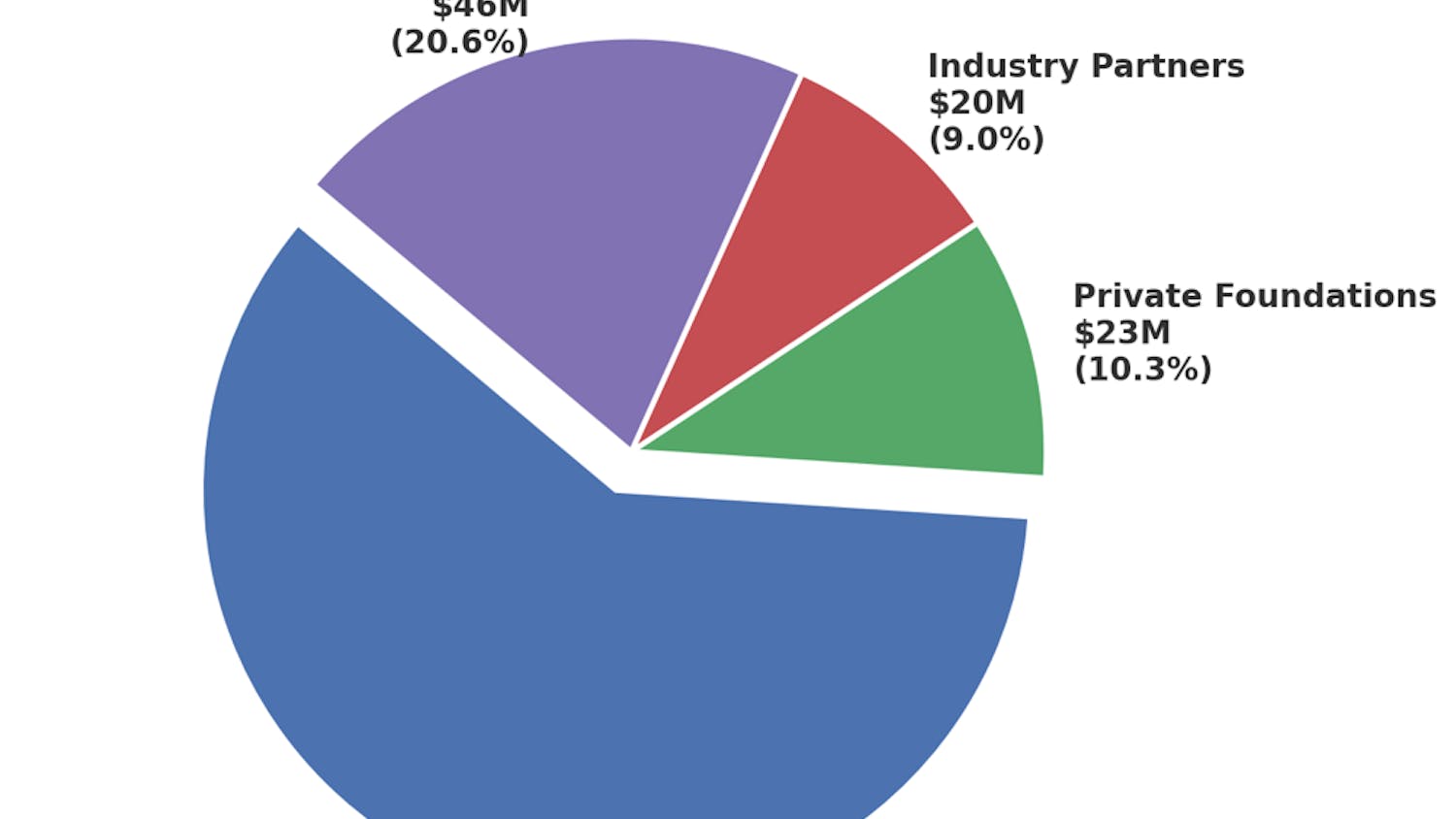This coming Monday commemorates the 50th anniversary of one of the most famous moments in the history of ND campus activism: the Notre Dame Ten. Remembering this point in our history offers the chance to consider where we’ve been and where the current moment finds us with respect to when and how we choose to speak out when everything isn’t golden under the dome.
If you were flipping through the New York Times on Nov. 19, 1969, you may have encountered a headline tucked at the bottom of page 60: “Notre Dame expels 5 in C.I.A. Protest.” The short blurb that detailed the Nov. 18 protest would not paint the whole picture. Other accounts left in the protest’s wake leave a trail of contradictory details of the day’s events and those that followed, leaving the infamous power struggle between University President Fr. Theodore Hesburgh and student organizers shrouded by the haze of collective memory. So it goes with the stuff of Notre Dame legends.
Like many good stories, this one has an unlikely villain: the Dow Chemical Company. An otherwise uninteresting corporation best known for its Saran Wrap (to be fair, an exciting new consumer product at the time), Dow accepted a lucrative contract to manufacture napalm for the U.S. military’s campaign in Vietnam in the late 1960s. Dow became the primary supplier of a notorious weapon for a notorious war, incurring the rage of student organizers on campuses across the country. Dow recruiters recall that they became so accustomed to students locking them inside University buildings during their recruitment events that they packed sandwiches and water to stay comfortable while they waited.
The 1969 protest was not the first time Notre Dame students stood up to Dow and the CIA. In November 1968, an overnight sit-in in the Main Building kicked off a 3-day vigil featuring music, speeches and a table set up to welcome dialogue with those who might have disagreed with the purpose of the protest. But the protesters that year did not hinder the recruiters from going about their ordinary business of ordinary industrial warmaking.
Fr. James Riehle — the dean of students at the time — praised the 1968 protest as an effective way to encourage passersby to “pause and consider the issues [the protestors were] raising,” and expressed this approval in contrast to protests that might hinder business as usual at the University. Riehle’s lecture on “acceptable” versus “unacceptable” nonviolent action hints that he understood that students were capable of much more disruptive acts — perhaps even ones that could challenge the balance of power within the University, or at least cause enough of a stir to call it into question.
Sensing continued unrest within the student body, Hesburgh released his letter containing the notorious fifteen-minute rule just a few months before the 1969 protest, forcing the protesting students to risk their status as students in order to speak their collective conscience.
The letter sent to the Notre Dame community in February of 1969 and picked up by the national news issued a warning for student protesters. It stated that any demonstrators that substituted “force for rational persuasion” would be given 15 minutes to disperse or otherwise face extreme disciplinary action.
The following semester, the Notre Dame Ten were the first to put the rule to the test. Here’s where the story gets fuzzy.
Reports of how many protesters were present vary. While news reports peg the number ranging from 75 to 200, the official section of the Notre Dame website commemorating Fr. Ted mentions no more than 12.
Some reports omit the fact that police in riot gear were called to campus to await a signal to enter the Main Building. Some sensationalized that the students had “locked up” a Dow recruiter.
While the five students facing expulsion successfully appealed to join the others in receiving suspensions, it is seldom mentioned that not all the students returned to complete their degrees. Reports vary, but suggest that between one and three of the students did not return, leaving one to wonder whether the decision had to do with a loss of faith in Notre Dame’s commitment to the freedom of protest.
Other little-reported details of the event abound. While the protest was for the most part student-powered, faculty members also supported the students in their effort. Sister Joann Malone, a member of the D.C. Nine who broke into the Dow offices in Washington and sprinkled blood on their files, was among the demonstrators. Rev. Emmanuel Charles McCarthy resigned in protest of the University’s response and disciplinary action. Other professors came to the defense of the students to help in appealing their sentences.
While the fifteen-minute rule lives on in campus legends, the official guidelines listed in the current edition of du Lac make it clear that campus demonstrations are subject to careful regulation. They outline that “all demonstrations must be registered in writing with the vice president for campus safety and University operations” and may not “impede the freedom of the University community”— eliminating the possibility of a demonstration comparable to the peaceful disruptions of business-as-usual in decades past.
One might wonder just how much freedom we have to express dissent with the University if they must first give their stamp of approval on every instance of doing so. But while our protests may be regulated, students have worked with and around these policies in creative ways beyond just wearing leggings: by organizing in the wake of the 2016 election in support of DACA students and other vulnerable communities, by protesting and educating on the Columbus murals, by voicing disappointment over new undergraduate housing policies and by gathering with community members to protest the presence of Attorney General William Barr near campus just a few weeks ago.
These examples only scratch the surface of the myriad ways Notre Dame students have been able to make their voices heard in recent years, and we hope they continue to feel empowered to do so to make this University a more welcoming place — complying with du Lac when possible and deviating peacefully when necessary.
Annie Moran is a senior hailing from Chicago studying psychology and education. She can be reached at amoran5@nd.edu or @anniemoranie on Twitter. She'd love to hear your musings on the wonders of fresh basil, experimental theater or the sacred space of public transportation.
Katie Hieatt is a senior majoring in Economics and American Studies from Memphis, Tennessee. Her go-to streaming recommendations are Russian Doll and Killing Eve. She can be reached at mhieatt@nd.edu or @katie_hieatt on Twitter.
The 50th anniversary of the Notre Dame Ten
The views expressed in this column are those of the author and not necessarily those of The Observer.









